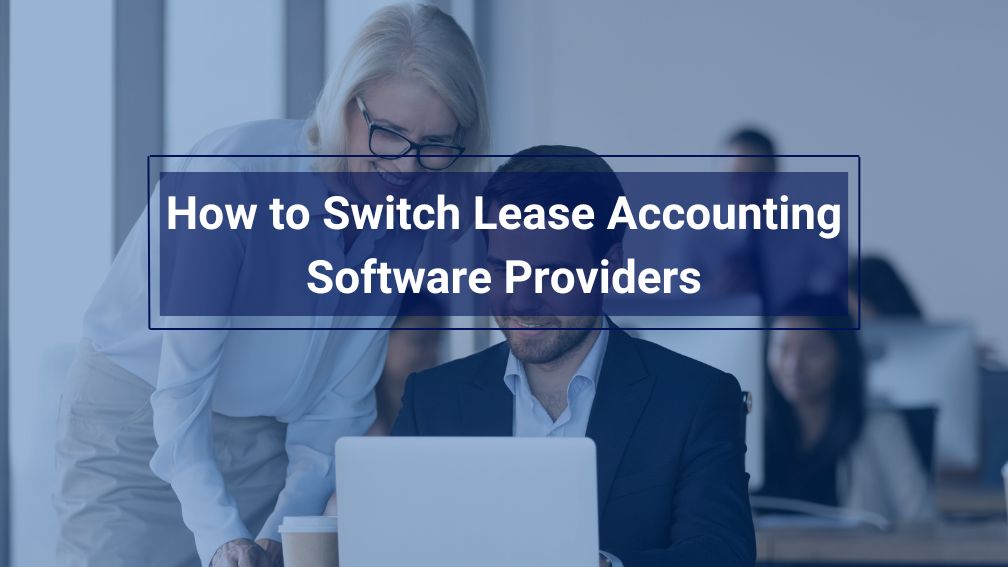How to Seamlessly Change Lease Accounting Software Providers
Last Updated on March 12, 2024 by Morgan Beard
With new accounting standards like ASC 842 and IFRS 16, changing lease accounting software providers is a significant decision for any business dealing with equipment leases or embedded leases. It necessitates a structured and strategic approach to ensure a smooth transition and compliance with US Generally Accepted Accounting Principles and other accounting rules affecting the accounting treatment of leases.
This process involves not just a shift in asset software technology, but also an adaptation period for your team and potentially an adjustment in thow your leases are managed, reported, and reflected. Your financial position and financial statements like the income statement, balance sheet and cash flow statement are impacted by the complex calculations of the new regulations. With careful planning and execution, however, you can minimize disruption and set the stage for enhanced efficiency, compliance, and insight into lease portfolios and underlying assets financial impact.
To change lease accounting software providers requires input from real estate, finance teams, and executives to determine that the cloud-based solution elevates your business processes for today and future organizational changes. Here’s a comprehensive guide to making the switch seamlessly.
Step 1: Assess Your Needs and Goals
Before diving into the transition, take a step back to understand why you’re making the change and what you aim to achieve with a new software provider. Consider scalability, collaboration needs, compliance capabilities, integration needs, and specific features like centralized repository for leases that were lacking in your previous solution. Setting clear objectives at this stage will guide your selection process and ensure the new software aligns with your accounting policy and business goals.
Step 2: Conduct Thorough Market Research
Once you know what you’re looking for, explore the market to identify software providers that meet your criteria. Look for reviews, ask for recommendations from peers, and consider the reputation of vendors in the industry. Prioritize those that not only offer the features and compliance capabilities you need but also have a user-friendly interface, demonstrate strong customer support and training resources.
Step 3: Evaluate and Select a Provider
With a shortlist of potential providers, evaluate each option carefully. Consider not just the software’s current capabilities but also the vendor’s roadmap for future development. Request demos, trial periods, and in-depth discussions with each vendor to understand how their solution can meet your specific needs. Consider factors such as ease of use, integration capabilities, reporting features, and customer support in your decision-making process.
Step 4: Plan the Transition
After selecting a new provider, plan the transition in detail. This plan should include data migration strategies, training schedules for your team, and a timeline for each phase of the implementation process. Work closely with your new provider to understand the best practices for data migration and to tailor the training to your team’s needs. Ensure that you have a clear understanding of any potential downtime or limitations during the switch and plan accordingly to minimize impact on your operations and internal controls.
Step 5: Migrate Your Data
Data migration is often the most challenging aspect of changing software providers. Work with your new vendor to ensure a smooth migration process. This may involve cleaning up your existing data, mapping data fields between the old and new systems, and conducting trial runs to identify any issues before the full migration. Ensure that data integrity is maintained throughout the process, with thorough checks and balances in place.
Step 6: Train Your Team
Comprehensive training is crucial to ensure that your team can effectively use the new software and understand the impact on journal entries and ROU asset calculations. Utilize the training resources provided by your new vendor, and consider additional sessions tailored to the specific needs of your team. Training should cover not just the basic functionalities but also advanced features and best practices for leveraging the software to its full potential.
Step 7: Go Live and Monitor
With your data migrated and your team trained, it’s time to go live with the new software. During the initial phase after going live, closely monitor the system’s performance and address any issues promptly. Provide ongoing support to your team to help them adjust to the new system, and gather feedback on any challenges or additional training needs.
Step 8: Review and Optimize
After the transition, conduct a review to assess the success of the changeover and the software’s performance against your objectives. Identify areas for optimization and work with your vendor to implement any necessary adjustments. Continuous improvement should be your goal, ensuring that the software continues to meet your evolving needs and accounting policy requirements.
Ready to Change Lease Accounting Software?
Changing lease accounting software providers is a strategic move that, when executed correctly, can offer significant benefits to your organization’s lease accounting processes and financial reporting. The significant changes created by the new standards, both ASC 842 and IFRS 16 created new lease accounting procedures for accounting teams to navigate to update their company’s balance sheet, lease liabilities calculations as well as to make better leasing decisions.
By following these steps, you can ensure a seamless transition, minimizing disruption to your operations and setting the foundation for improved lease accounting management aligned with the latest accounting standards. With the right approach, this change can be an opportunity to enhance compliance, efficiency, and insight into your lease portfolio and its impact on your financial statements.
Lease Accounting Resources
Check out our resource hub. We have the templates, spreadsheets, and calculators to help you manage entire lease lifecycle.
